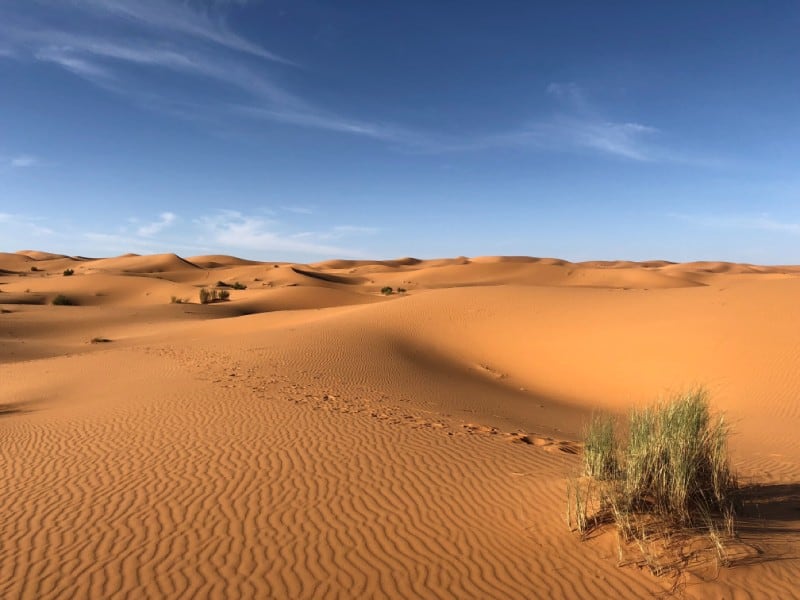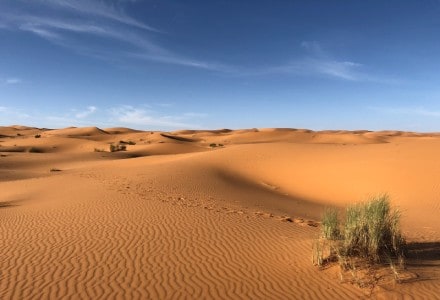
Sahara Facts
- The term Sahara refers to a truly phenomenal region. That’s because it qualifies as the largest and best known hot desert on earth. Only the Arctic and Antarctic measure larger in overall area. These, however, classify as cold deserts, thus do not compare.
- It partly owes its remarkableness to where it formed. That’s due to the fact that the majority of the desert lies in the northern part of Africa. The total area of the desert also compares to the combined surface area of both the United States and China.
- This formation also draws its name from the Arabic word for desert. The boundaries of the region remain roughly marked by the Atlas Mountains in the north, the Red Sea in the east, the Atlantic Ocean in the west, and the Niger River valley in the south.
- Prior to roughly 3,600 years ago the region now known as the Sahara possessed a significantly different climate. Owing to this, the area actually boasted a comparatively lush, tropical-like environment. Nature, though, frequently changes things.
- These changes, in fact, actually occur in rhythmic cycles. This occurs due to the precession the earth’s axis as it moves around the sun. The region therefore alternates between desert and lush savanna grassland approximately every 20,000 years.
Related Articles
Death Valley Painted Desert Maine Desert
Sahara Geographical Variety
The geological marvel that we call the Sahara easily distinguishes itself from other such features around the world. That’s due to the simple yet impressive fact that, in addition to sheer size, this site also possesses an extensive variety of geographical features.
That astounding characteristic nevertheless does bear mentioning, though. In total area, the desert covers roughly 3.5 million sq mi (9 million sq km). The vast expanse of sand simply boggles the mind for most individuals fortunate enough to journey within its confines.
The majority of the features of the Sahara are shaped by wind movement and erosion. The expansive sand dunes remain the most prominent and extensive of its features. Also present within its boundaries are sand seas, dry valleys, dry lakes, stone plateaus, and salt flats.
With the exception of the Nile river, streams and waterways remain scarce. Fed by underground water supplies, oases remain infrequent and typically small. Blowing sands frequently change local conditions, creating a breathtaking and ever-changing landscape.
Sahara Climate
Some of the outlying portions of the region encompassed by the Sahara do possess a more moderate climate. The majority of its vast area qualifies as extremely arid, though. Much of its expanse, in fact, receives extremely little rainfall throughout the year.
More precisely, most of the desert receives less than 4 in (10 cm) of rain per year. The region also regularly suffers extremely high temperatures. The average temperature is approximately 104F (40C), yet on occasion, the temperature reaches a high as 122F (50C).
A slight wind almost constantly blows across the region. Occasionally, forces drive these winds to rather extreme velocities, forming powerful and dangerous sandstorms. The aridity of this wind quickly dehydrates those unprotected individuals exposed to it.
Sahara Flora and Fauna
Despite its decidedly inhospitable climate, life does exist within the Sahara. Its confines roughly divide into three rather distinct biogeographical zones. The flora native to each zone varies dramatically, and the majority of the species concentrate in the outlying regions.
Overall, an incredible total of roughly 2,800 species of plants live within the boundaries of the area. The nature of the majority of these doubtless come as no surprise to most people. Examples of these include palms, acacia trees, grasses, and spiny shrubs.
In most locations where plants appear, animals do too. This site’s no exception. Fauna endemic to the Sahara includes camels, gazelles, scorpions, various reptiles, and several species of foxes. Several species of small crocodile also live in the Nile river and larger oases.
Geological Marvels Sharing Its Region
Nyiragongo Volcano Lake Natron Ol DoinyoLengai
Check out our other articles on 3 Completely Captivating Crocodilians , Vietnamese Mossy Frog, Baatara gorge waterfall, Reef Manta Ray, Living Stones, Rainbow Snake

